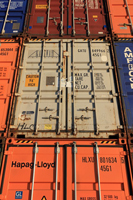 Paying a little extra for quality tools and materials is, sometimes, a good idea. But let’s be honest: What can a two hundred dollar hammer do that a twenty dollar hammer cannot? It’s just a hunk of steel you use to whack nails into wood. As long as it’s durable enough to get the job done, there’s nothing that another hundred eighty dollars adds to the experience, is there?
Paying a little extra for quality tools and materials is, sometimes, a good idea. But let’s be honest: What can a two hundred dollar hammer do that a twenty dollar hammer cannot? It’s just a hunk of steel you use to whack nails into wood. As long as it’s durable enough to get the job done, there’s nothing that another hundred eighty dollars adds to the experience, is there?
It’s worth investing a little extra in quality, but if you Google the best bottles of wine in the world, you’ll find several in the $20-$100 range, and a few in the $3,000+ range. Is the human tongue even sophisticated enough to tell two thousand nine hundred dollars of difference? When you buy cheap, you get what you pay for, certainly, but after a certain point, any improvement in quality you get by spending more money is going to be tremendously marginal.
So how expensive should any given tool be? The tricky thing about that question is that the answer is subjective: A tool is worth what you’re willing to pay.
Your best bet in shopping for tools and materials in construction is not to equate price with quality. Simply look for top-reviewed products, brands you’re comfortable with or that come highly recommended, and grab the one that’s within your budget. Buying the cheapest tool available might wind up costing you more in the long run if it malfunctions, if it causes an injury, if it breaks down and needs to be replaced a month after you’ve taken it out of the box. But we’ve pretty much mastered the power drill in the $50-$100 range. Spending an extra $200 on the purchase isn’t going to make a job any easier.
When it comes to cars, suburban homes, fashion, gourmet food, it’s not always about quality so much as it is about status. There are $20,000 luxury cars that feel as nice as a $100,000 alternative, but nobody turns their head and says “Wow, get a look at that Toyota!” Construction is a more practical field in many ways. When you walk onto a job site with a two hundred dollar hammer, your co-workers are more likely to laugh than envy you.










